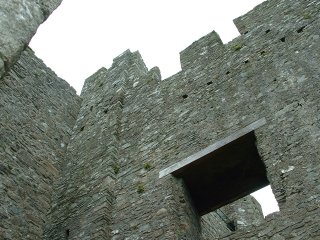Dr John McCavitt’s article entitled, ‘The Newry Massacres of 1641-2’, is reproduced from the original which first appeared in the 1988 edition of Cuisle na nGael.
Newry Journal readers are urged to consult the original article, as inevitably we have erred in ‘summarising’ what appeared there!
John McCavitt :
‘Undoubtedly the events of the 1641 rebellion in
‘It is well known that the reason for the controversy surrounding the events in Ulster in 1641 is that they have been linked to a charge against the Irish of perpetuating a ‘general massacre’ of British protestants at the outbreak of the war in which tens, even hundreds of thousands of protestants were killed..’
Recent historiography has shown that these estimates were wildly exaggerated. The entire British population in the
This is not to say, of course, that the massacres did not take place. The problem for historians is in determining how much trust one can put in contemporary evidence provided by British settlers and thus arriving at a sober, dispassionate enumeration of the causalities. Most of the evidence for the massacre of protestant settlers is to be found in ‘the 1641 depositions’ held in the Trinity College Dublin archives.
These ‘depositions’ were statements taken from protestant eye-witnesses of the ‘massacres’. By their nature they are a tendentious source. Percival-Maxwell (opt. cit.) highlights
‘although the depositions were not linked with the charge of a general massacre until 1646, they were part of a carefully organised propaganda campaign‘.
The intention of that campaign was to whip up support in
Still, what do the ‘depositions’ tell us about the initial events in Newry at the outbreak of the rebellion in 1641?
Newry was targeted for attack as part of an overall scheme to cut off the British settlers – in a line running roughly west of the Bann – from their fellow countrymen in the east of the province. Accordingly Newry was captured on the first day of the revolt in October 1641.
Elizabeth Crooker’s deposition (reproduced in full in McCavitt’s Cuisle na nGael 1988 article) shows that only the protestant minister in the town, one Mr Tudge – was slain by the insurgents soon after the capture of the town.
Why he was singled out is uncertain. There was a general fear of Puritans. Indeed the Irish had their own version of the ‘intended massacre’ theory, believing that they had to strike before the Puritans launched a general massacre of Roman Catholics.
Evidently though, Elizabeth Crocker and her son were treated roughly by the insurgents. Indeed it is interesting that they – and the other captured Newry protestants – were stripped of their clothes. This was a general feature of events in 1641 and this type of action has been interpreted in a recent historical work as one of a number of factors which demonstrated that there was a clear ecomonic basis for the revolt.
Also it is clear that there was a belief among the protestant settlers that God would wreak revenge on the Irish because of their behaviour. In her deposition,
It was the Irish women apparently who issued the most blood-curdling threats to their protestant captives. Yet she detected some sympathy from some of the Irish inhabitants ..
‘.. some of the Irish goeing to masse seemeing to pitty them, did bid them goe to a creaght hereby to warm them ..’
Of special interest are her remarks about the subsequent execution of some of the Newry captives at
Yet Lord Ernest Hamilton, writing about the events at
Some of the depositions clearly contradict each other. Yet there is no doubt about the vengeful slaughter carried out by the forces of General Munro in the town when it was retaken by the British in May 1642. That is because the source for the latter is the British themselves.
On 6 May 1642, three days after the town was retaken, sixty men and two priests were executed on the bridge over the moat of
Lord Ernest Hamilton commented on the reasons behind Munro’s soldiers’ action:
‘There can be very little doubt however, that the executions at Newry as well as the murder of the women by the soldiery were provoked by some massacres of the British subsequent to the capture of Newry, of which the news had reached Munro before the date of the execution’.
This would seem a tenable judgement except for the fact that he goes on to affirm that a massacre of protestants at Scarva bridge in early May 1642 provoked the same retaliation which was unleashed in Newry later in the same month.
‘All these circumstances of the case, taken in conjunction with ascertained dates, leave little doubt that the particular occurrence which provoked the Newry executions and murders was the massacre at Scarva bridge of some sixty British men, women and children (i.e. the exact number put to death at Newry) by Toole McCann on either the 3rd or 4th of May.’
He cannot have it both ways. Clearly the slaughter of the Newry Irish cannot have been both a head-for-head retaliation for the sixty protestants killed at Scarva bridge, AND a retribution for the sixteen to twenty-seven protestants killed in the previous year in the aftermath of the Irish capture of Newry. The numbers do not tally. It would be better to suggest that there are strong grounds for believing that the massacre carried out by Munro’s men was in retaliation BOTH for the earlier killing of Newry protestants AND for the slaughter at Scarva bridge – and leave it at that.
The historiography of the 1641 rebellion has suffered from serious shortcomings.
Some Newry protestants were killed, certainly, but the killing was not wholesale.
